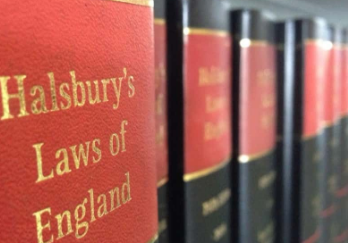
Law Handbook: It is not a specific well-known title in legal literature. It may refer to a comprehensive guide on secondary legislation in the UK.
Secondary legislation is delegated or subordinate legislation that allows the UK government to make changes to the law without needing to pass a new Act.
Introduction :
In the complex landscape of UK primary legislation, legal systems such as acts of parliament, form the bedrock of the law. Much of the partial application and day-to-day functioning of is governed by secondary legislation in parliament.
Secondary legislation is crucial for the detailed implementation of many primary laws. This article explores the importance, nature, and process of secondary legislation in the UK, referred to as Second Law Handbook .
▪️Secondary legislation comprises laws created by an individual or body under powers given to them by an Act of parliament.
▪️Primary legislation sets out broad policies and principles.
◾️Types of Secondary Legislation:
1. Statutory Instruments:
These are the most important and prevalent forms of secondary legislation. They can include rules, orders , regulations, and codes of practice .?
2. Orders in Council:
It is made by the queen on the advice of the privy Council, These are mostly used for certain administrative functions or in times of emergency.
3. Bylaws:
Local laws made by local authorities such as transport operators, to address issues within their jurisdiction and less time.
4. Codes of practice:
These are detailed guidelines issued by agencies or government departments.
▪️The legislation process of secondary legislation:
The process for creating secondary legislation is less rigorous than that for primary legislation, reflecting its role in implementing and detailing existing laws rather than creating new more interesting laws. There are still more important checks and balances to ensure transparency and accountability.
◾ Drafting:
Secondary legislation is drafted by legal experts within government departments, guided by the accurate principles and provisions set out in the Parent Act of Parliament. This drafting process involves considerable expertise to ensure that the secondary legislation more accurately reflects the intentions of primary legislation.
▪️Consultation:
Before being enacted, Secondary legislation is nice and often goes through a consultation phase. This phase allows each stakeholder, such as local authorities, industry bodies, and the general public, to provide input. This feedback helps refine the secondary legislation and address any potential issues.

▪️Laying Before Parliament:
Once drafted, Secondary legislation is nice but usually “ laid before parliament “. This process can follow several procedures, and points, including :
1. Affirmative procedure:
Requires explicit approval by both Houses of Parliament in secondary legislation. This is used for more controversial measures or significant ones.
2. Negative procedure:
Becomes law without debate unless there is an objection from either House within a specified period accurately.
3. Super Affirmative procedure:
Involves more extensive scrutiny and is used for particularly very important or complex issues.
▪️Scrutiny and Approval:
Parliamentary committees play an amazing and crucial role in scrutinizing secondary legislation.
Scrutiny committee examines the technical aspects and proper implications of secondary legislation. These committees can raise concerns, but they cannot veto the secondary legislation.
▪️Importance of secondary legislation:
Secondary legislation is known for several points :
1. Flexibility:
It allows laws to be updated and refined without the need for a new Act of Parliament, providing flexibility and smoothness to respond to changing circumstances.
2. Detail:
Secondary legislation provides the necessary details for practical implementation, while primary legislation often sets out broad principles.
3. Efficiency:
It streamlines the legislation process by enabling technical and administrative details to be handled more smoothly and efficiently.
(law Handbook)
▪️Examples of secondary legislation:
To illustrate the importance and impact of secondary legislation consider these points :
1. Environmental regulations:
Secondary legislation often sets out completely detailed rules for environmental protection, such as pollution control, and waste management, under the framework of primary environmental Acts.
2. Public Health:
During the COVID-19 pandemic , much of the emergency response, including public health measures and lockdowns, was implemented through secondary legislation.
3. Transport:
Detailed regulations governing vehicle standards, road safety, and public transport operations are completely established through secondary legislation.

▪️Challenges and Criticisms:
Despite its importance, Secondary legislation faces many criticisms and several challenges.
1. Lack of scrutiny:
Critics argue that secondary legislation receives less scrutiny than primary legislation in parliament, potentially leading to less democratic oversight.
2. Complexity:
The sheer complexity and volume of secondary legislation can make it more difficult for individuals and businesses to stay compliant and informed.
3. Overuse:
There are concerns that secondary legislation may be overused, bypassing the more rigorous scrutiny and debate associated with primary legislation than secondary legislation.
▪️Conclusion
The “ Second Law Handbook,” pr the framework of secondary legislation in the UK, plays an important and crucial role in the legislation process. By providing the necessary detail flexibility and smoothness to implement secondary legislation, primary legislation ensures that laws are responsive, practical, and capable of addressing complex and evolving issues. Understanding this aspect of the legal system is main and essential for anyone involved in the application or study of UK law, highlighting the intricate and amazing balance between detailed and well-explained legal rules and broader legislation principles.




